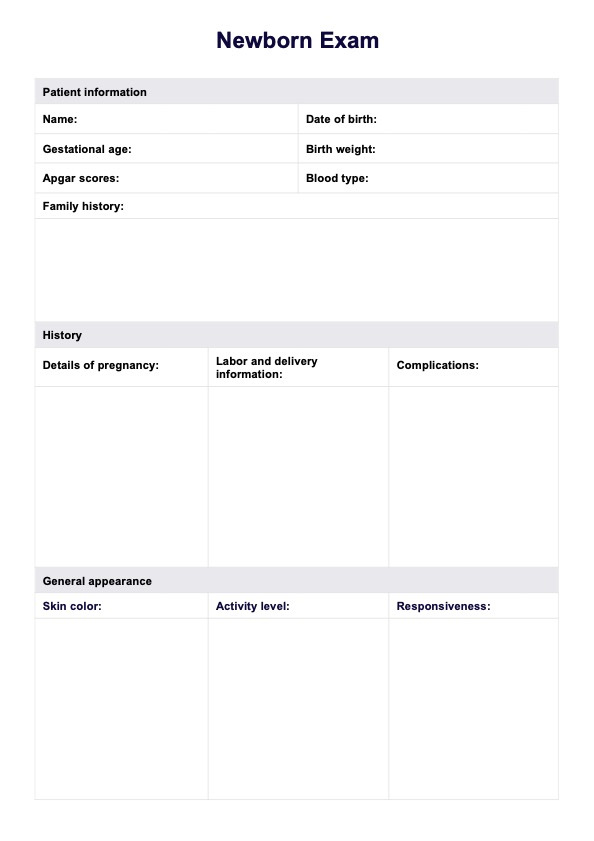The assessment of a newborn involves evaluating their overall health, physical maturity, and vital signs shortly after birth. It includes checking for abnormalities, assessing reflexes, and ensuring normal organ function to detect and address potential issues early.

Newborn Exam Template
Streamline newborn examinations with our comprehensive template, ensuring thorough newborn assessment and care. Download now!
Newborn Exam Template Template
Commonly asked questions
The seven commonly screened conditions include metabolic disorders, congenital hypothyroidism, cystic fibrosis, sickle cell disease, phenylketonuria (PKU), hearing loss, and critical congenital heart defects. These screenings help identify conditions that may require immediate treatment or management.
A newborn examination systematically assesses the baby’s head, skin, limbs, heart, lungs, abdomen, and reflexes. Measurements such as weight, length, and head circumference are taken, and screenings for congenital conditions are performed to ensure the baby’s health and well-being.
EHR and practice management software
Get started for free
*No credit card required
Free
$0/usd
Unlimited clients
Telehealth
1GB of storage
Client portal text
Automated billing and online payments











